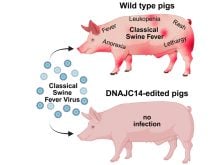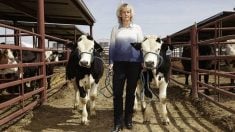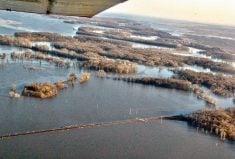Nearly four years after the inception of Canada’s species at risk legislation, recovery strategies have been developed for only four endangered species.
Dave Duncan, head of species at risk recovery for the Canadian Wildlife Service, told a recent conservation conference in Regina that the pace will pick up, and dozens of strategies will be posted this year for species ranging from the white flower moth to the black-footed ferret.
SARA, as the legislation is known, requires recovery strategies to be developed for all endangered species. These strategies identify what must be done to help save a species from extinction or stop its declining population.
Read Also

Organic farmers urged to make better use of trade deals
Organic growers should be singing CUSMA’s praises, according to the Canadian Chamber of Commerce.
About 190 strategies are under development right now; more than 300 species have been identified as threatened, endangered or extirpated.
The four strategies that have been posted on the SARA public registry for consultation are for the northern spotted owl in British Columbia, the leatherback sea turtle, the Barrens willow in Newfoundland and the piping plover on the Prairies.
Duncan said the biggest challenge in implementing the legislation was the depiction of SARA as the bogey man.
“You know, ‘check under your bed,’ ” Duncan told laughing conference attendees.
But he noted that several events during SARA’s short life highlight the need for the legislation, including the development of the biofuel industry and the changing market due to BSE.
As well, the fate of rangeland, which is home to many species at risk, lies in the hands of those who own or lease it and the agricultural and market conditions that determine how they use it.
Duncan said recovery strategies and action plans should be in place for the species on the list in about five years. Then, more time and energy can be spent saving the resource, he added.
Several provincial government representatives noted that staffing and finances are a huge concern.
James Duncan, manager of biodiversity conservation with Manitoba’s conservation department, said 60 species at risk live in his province and approximately 1.5 staff years are required for each recovery plan, or the equivalent of 90 staff members. However, the province has only one full-time employee and eight others working part-time on species at risk initiatives, which he said is where working with groups outside government becomes so important.
Budgets are also a problem: $300,000 a year in Saskatchewan and Alberta and $500,000 in Manitoba.
Several Alberta organizations have produced At Home on the Range, a guide to help landowners and others manage their land to benefit them and species at risk.
Richard Quinlan, a species at risk specialist for the Alberta government, said extension efforts using the document will begin in earnest in April.















